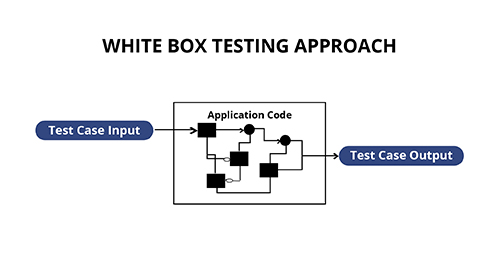White box testing encompasses various categories, each designed to address specific aspects of the software’s internal workings. These categories ensure a comprehensive evaluation of the software’s structure, logic, and behavior.
What is White Box Testing?
White box testing is a method of software testing where the tester has access to the internal workings of the system. This approach allows for a thorough examination of the code, including the verification of flow, loops, conditions, and data handling. It is primarily used by developers and quality assurance engineers during the unit testing phase but can be extended to integration and system testing.
White Box Categories
- Unit Testing
- Integration Testing
- Regression Testing
- Code Coverage Analysis
- Static Code Analysis
- Control Flow Testing
- Data Flow Testing
- Mutation Testing
- Security Testing
1. Unit Testing
Unit testing is the process of testing individual components or units of code, typically functions or methods, to ensure they work correctly in isolation. It focuses on verifying the smallest testable parts of an application.
Objectives:
- Verify the correctness of a specific section of code.
- Ensure that each unit performs its intended function.
Tools:
- JUnit (Java)
- NUnit (.NET)
- pytest (Python)
2. Integration Testing
Integration testing involves combining individual units of code and testing them as a group. This category focuses on the interactions and data flow between integrated units to identify interface and interaction issues.
Objectives:
- Ensure that integrated units work together as intended.
- Detect issues related to data exchange, control flow, and interface mismatches.
Approaches:
- Top-Down Integration: Testing from the top of the module hierarchy downwards.
- Bottom-Up Integration: Testing from the bottom of the module hierarchy upwards.
- Sandwich Testing: A combination of top-down and bottom-up approaches.
3. Regression Testing
Regression testing involves re-running previously conducted tests on modified code to ensure that recent changes haven’t adversely affected existing functionality. It aims to catch new bugs that may have been introduced by changes in the codebase.
Objectives:
- Verify that new changes do not disrupt existing functionality.
- Ensure overall stability after code modifications.
Techniques:
- Re-execution of test suites.
- Automated regression test scripts.
4. Code Coverage Analysis
Code coverage analysis measures the extent to which the source code of a program is executed during testing. It helps in identifying untested parts of the code and improving test coverage.
Types:
- Statement Coverage: Ensuring each statement in the code is executed.
- Branch Coverage: Ensuring each possible branch (true/false) is tested.
- Path Coverage: Ensuring all possible paths in the code are executed.
Tools:
- JaCoCo (Java)
- Istanbul (JavaScript)
- Coverage.py (Python)
5. Static Code Analysis
Static code analysis involves examining the code without executing it to find potential errors, code smells, and vulnerabilities. It uses tools to analyze the code against a set of coding standards and guidelines.
Objectives:
- Detect code quality issues and potential bugs early in the development process.
- Ensure adherence to coding standards and best practices.
Tools:
- SonarQube
- Checkstyle (Java)
- Pylint (Python)
6. Control Flow Testing
Control flow testing focuses on the logical flow of the program. It involves creating test cases that ensure all possible control paths are executed, including loops, branches, and conditions.
Objectives:
- Ensure that all control structures (loops, conditionals) function correctly.
- Identify unreachable code and infinite loops.
Techniques:
- Control flow graphs
- Loop testing
- Branch testing
7. Data Flow Testing
Data flow testing examines the lifecycle of data within the program, tracking how data is defined, used, and killed (i.e., removed from memory). This technique helps in identifying anomalies such as uninitialized variables and improper use of data.
Objectives:
- Ensure proper handling of data within the application.
- Detect data misuse and anomalies.
Techniques:
- Definition-use (DU) chains
- Use-definition (UD) chains
8. Mutation Testing
Mutation testing involves making small changes (mutations) to the code to ensure that the test suite can detect these changes. It helps in evaluating the effectiveness of the test cases.
Objectives:
- Assess the quality and comprehensiveness of the test cases.
- Identify weaknesses in the test suite.
Tools:
- PITest (Java)
- MutPy (Python)
9. Security Testing
Security testing focuses on identifying vulnerabilities and ensuring that the code is secure against potential threats. This involves testing for common security issues such as SQL injection, cross-site scripting (XSS), and buffer overflows.
Objectives:
- Ensure the application is secure from potential threats.
- Detect and fix security vulnerabilities.
Tools:
- OWASP ZAP
- Fortify
- Veracode
Enozom is a reputable software development company that emphasizes delivering high-quality solutions through rigorous testing methodologies, including white box testing. White box testing at Enozom involves multiple categories, such as unit testing, integration testing, and code coverage analysis, ensuring that every aspect of the software’s internal workings is thoroughly examined. By leveraging advanced tools and techniques, Enozom ensures that the code is not only functionally correct but also optimized for performance and security.
Conclusion
Each category of white box testing addresses different aspects of software quality, from verifying individual units to ensuring the security and robustness of the entire application. By employing these categories, developers and testers can achieve a thorough and comprehensive evaluation of their software, leading to higher quality and more reliable applications.
